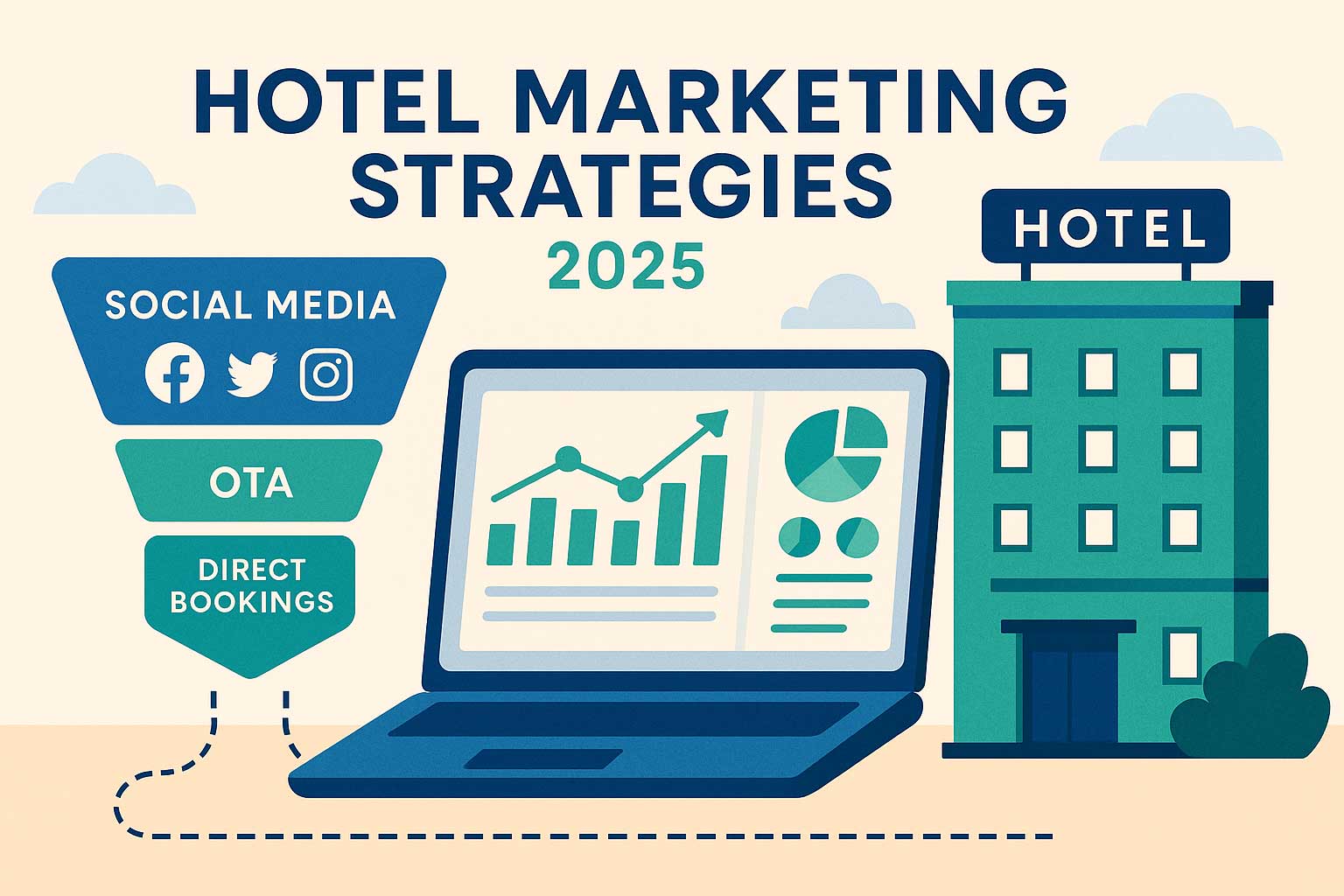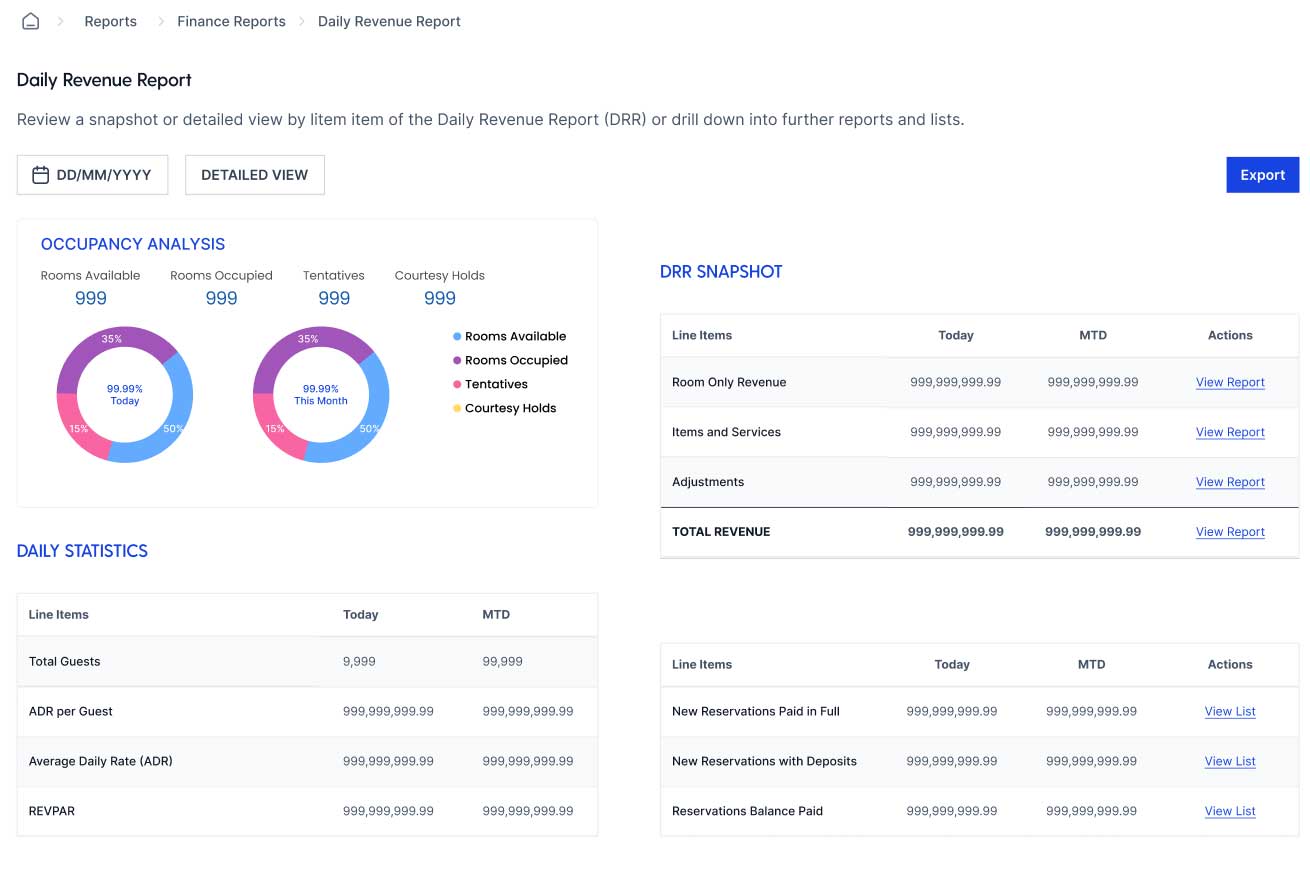Hotel Daily Revenue Report: Your Complete Guide to Smarter Revenue Management
Sep 14, 2025
 Mika Takahashi
Mika TakahashiPopular Categories
Hotel Technology & InnovationHotel Operations OptimizationDigital MarketingIndustry TrendsRevenue ManagementHospitality Industry
Popular Categories
Trending Post

Hotel Walk Letter Template: Professional Guest Communication

Online Travel Agents: What They Are and How They Work

Hotel Security Systems: Modern Protection Solutions

Hotel Advertising: Complete Guide to Boost Bookings and Revenue

25 Hotel Marketing Strategy Ideas for 2025: Complete Guide

AI Reservation Agent: Revolutionizing Hotel Booking and Guest Experience

PMS Communication: Streamlining Property Management Through Effective Guest Messaging
Table of contents
In today’s fast-paced hospitality world, every dollar counts. Hotels that keep a close eye on their daily revenue consistently outperform their competitors by 15-20% when it comes to optimizing income. Yet, many still rely on weekly or monthly reports that don’t capture the day-to-day shifts and opportunities that can make a real difference.
A well-crafted hotel daily revenue report takes raw sales data and turns it into clear, actionable insights that help you grow your business and maximize revenue. This guide will walk you through how to create, use, and improve daily revenue reports so you can get a real-time view of your hotel’s financial health and stay ahead of market trends and your competition.
What Exactly Is a Hotel Daily Revenue Report?
Simply put, a hotel daily revenue report is a detailed financial snapshot of all the money your hotel brings in over a 24-hour period. It covers everything from room bookings to food and beverage sales, plus all the other services your property offers.
This report is the backbone of smart revenue management. It gives you real-time insights into how full your hotel is, how well your pricing strategies are working, and your overall financial performance. Usually generated early each morning to cover the previous day (midnight to midnight), it allows you to make quick, informed decisions based on what’s happening right now—not last week or last month.
Unlike traditional reports that come too late to act on, the daily revenue report gives you immediate visibility into where your money is coming from and how different departments are performing. This means you can adjust your pricing, marketing, and inventory before small issues turn into big revenue losses.
With detailed breakdowns of total revenue across all departments, you’ll spot trends that longer-term reports might miss. Tracking data daily helps you forecast demand more accurately and react quickly to changes that impact your bottom line.

What Goes Into a Hotel Daily Revenue Report?
To get the full picture, your daily revenue report should cover all the ways your hotel makes money. Knowing these components inside and out helps you keep track of every dollar generated.
Room Revenue Breakdown
Room revenue usually makes up the biggest chunk of your total revenue. This section should include:
- Revenue from different room types like standard rooms, suites, and premium options
- Number of rooms sold compared to rooms available
- Average daily rate (ADR) for each room category
- How different booking channels impact revenue
- Revenue from group bookings versus individual guests
Food and Beverage Revenue
Food and beverage sales are a key part of your hotel’s income:
- Restaurant sales during breakfast, lunch, and dinner
- Bar and lounge sales, including drinks
- Room service and delivery fees
- Banquets, events, and catering
- Conference and meeting refreshment services
Other Revenue Streams
Hotels today earn money from many other services beyond rooms and food:
- Spa and wellness treatments
- Laundry and dry cleaning
- Parking and valet services
- Business center usage and equipment rentals
- Gift shop and retail sales
- Fitness and recreational facilities
Taxes and Fees
Tracking taxes and fees correctly is essential for compliance and accurate accounting:
- Sales tax on all applicable services
- Occupancy taxes and city fees
- Resort fees and mandatory charges
- Tourism taxes and local assessments
| Revenue Category | Typical % of Total Revenue | Daily Tracking Priority |
|---|---|---|
| Room Revenue | 65-75% | High |
| Food & Beverage | 15-25% | High |
| Spa Services | 3-8% | Medium |
| Parking/Other | 2-7% | Medium |
| Retail/Business Center | 1-3% | Low |
Payment Methods
Understanding how guests pay can reveal booking habits and cash flow patterns:
- Credit card transactions and fees
- Cash payments and currency exchanges
- Corporate direct billing
- Mobile and digital wallet payments
- Gift certificates and loyalty redemptions
Key Metrics to Watch in Your Daily Revenue Report
Your report should include key performance metrics that give you a clear picture of how your hotel is doing and where you can improve.
Occupancy Rate
This tells you the percentage of rooms filled during the day. It’s a quick way to gauge demand and how well you’re using your capacity.
Formula: Occupancy Rate = (Rooms Sold ÷ Total Available Rooms) × 100
Example: If you have 100 rooms and sell 85, your occupancy rate is 85%.
Average Daily Rate (ADR)
ADR shows the average income you earn per room sold, before taxes and fees. It helps you see if your pricing is on point.
Formula: ADR = Total Room Revenue ÷ Rooms Sold
Example: If your room revenue is $12,750 from 85 rooms sold, your ADR is $150.
Revenue Per Available Room (RevPAR)
RevPAR combines occupancy and ADR for a fuller picture of room revenue.
Formula: RevPAR = ADR × Occupancy Rate (or Total Room Revenue ÷ Total Available Rooms)
Example: With an ADR of $150 and occupancy of 85%, RevPAR is $127.50.
Total Revenue Per Available Room (TRevPAR)
TRevPAR goes beyond rooms to include all revenue sources, giving you a complete view of profitability.
Formula: TRevPAR = Total Revenue ÷ Total Available Rooms
This helps you spot chances to boost ancillary revenue and improve profit margins.
Food and Beverage Metrics
Track how your restaurant and catering are doing with:
- F&B Revenue per Occupied Room (RevPOR)
- Covers Served (meals served to residents and non-residents)
- Average Check per Cover

Why Daily Revenue Reports Matter
Daily revenue reports aren’t just numbers—they’re powerful tools that can transform your hotel’s profitability and efficiency.
Real-Time Revenue Visibility
With daily reports, you see exactly how you’re performing against your goals every day. If something’s off, you catch it fast and can fix it before it affects your bottom line.
This immediate insight lets you adjust prices dynamically—raising rates when demand is high and offering promotions when things slow down—to fill rooms and boost revenue.
Benchmarking Performance
Daily reports let you compare your current performance to past days, weeks, months, and even years. You can also benchmark against your budget and competitors.
These comparisons help you spot trends early and forecast more accurately, so you’re always prepared for what’s coming.
Smarter Decision Making
When everyone has access to daily revenue data, decisions get smarter. Revenue managers can tweak pricing, marketing teams can shift campaigns, and operations can adjust staffing and inventory—all based on real-time insights.
Spotting Trends and Forecasting
Daily data reveals patterns you might miss with monthly reports:
- Booking pace and future demand
- Guest spending habits
- Seasonal shifts in revenue streams
- Effects of local events or market changes
These insights help you forecast better and seize new revenue opportunities.
Fraud Prevention and Financial Control
Daily revenue reconciliation acts as an early warning system for discrepancies or fraud. It helps you catch issues before they grow, protecting your profits and keeping your financial reporting accurate.
Tips for Creating Effective Daily Revenue Reports
To get the most out of your daily revenue reports, follow these best practices:
Timing and Sharing
Generate reports by 8:00 AM so your team can review them before the day’s operations. Share the reports consistently with key players like general managers, revenue managers, sales directors, and accounting.
Automate and Integrate
Use your property management system to automate report generation and distribution. Make sure all your revenue systems—from front desk to POS to spa software—are integrated for seamless data flow.
Clear Format and Visuals
Keep your reports consistent and easy to read. Use charts and graphs to highlight trends and department performance. Include summaries, variance explanations, and actionable insights.
Accuracy Checks
Set up automated validation rules to catch errors before reports go out. Cross-check data across systems to ensure everything matches—from room revenue to cash deposits.

Overcoming Common Challenges
Even the best systems face hurdles. Here’s how to tackle some of the biggest challenges with daily revenue reporting:
Multiple Data Sources
Revenue data often lives in different systems that don’t talk to each other.
Fix: Adopt an integrated PMS that syncs all revenue streams in real time or use middleware to unify data.
Manual Data Entry Errors
Typing in data manually invites mistakes.
Fix: Automate data collection with system integrations and use validation rules to flag odd entries.
Reporting Delays
Late reports mean missed chances to act.
Fix: Schedule automated report generation early and use mobile dashboards for instant access.
Limited Analysis
Basic reports don’t tell the whole story.
Fix: Add comparative analysis, variance explanations, and trend insights. Train your team to dig deeper and use reports to guide action.
Making the Most of Revenue Analysis
Use your daily reports to dig into performance and find ways to grow:
Compare and Adjust
Look at budget variances, year-over-year changes, and competitor data to spot where you’re winning or lagging.
Optimize Revenue Mix
Track how much revenue comes from rooms versus other services. Focus on upselling and improving underperforming areas.
Understand Guest Behavior
Analyze revenue per guest, how many guests use ancillary services, and how length of stay impacts spending. Use this to tailor marketing and services.
Factor in Seasons and Events
See how holidays, local events, and seasons affect revenue. Adjust pricing and promotions accordingly.
Technology to Power Your Daily Revenue Reporting
Modern technology makes daily revenue reporting easier and more accurate.
Property Management Systems (PMS)
Top PMS platforms offer built-in daily revenue reports:
Prostay Daily Revenue Report: Gives a full picture of your property’s daily financial performance, tracking everything from room revenue to taxes and expenses. Integrated within Prostay PMS, it automates data collection and delivers insights to help you adjust pricing and manage inventory effectively.
Other enterprise options include:
- Oracle OPERA: Real-time data integration and customizable reports
- Hilton OnQ: Integrated revenue management across departments
- Marriott FOSSE: Standardized reporting with brand benchmarks
Cloud-Based Solutions
Cloud platforms offer flexibility, remote access, and scalability. They often come with mobile apps and integrate with accounting software for seamless financial management.
Integration Essentials
Make sure your systems communicate:
- Use APIs to connect PMS, POS, spa, and other revenue systems
- Synchronize data in real time
- Standardize data formats for smooth exchange
- Automate reconciliation to catch discrepancies fast
Looking Ahead: Future Trends in Revenue Reporting
Hotel revenue reporting is evolving fast. Here’s what’s coming next:
AI and Machine Learning
AI tools will predict demand, recommend pricing, and spot anomalies before they happen—helping you stay proactive instead of reactive.
Real-Time Dashboards
Reports will update live throughout the day, letting you adjust pricing and strategies on the fly.
Broader Data Integration
Expect to see social media sentiment, local events, weather, and economic indicators feeding into revenue forecasts.
Sustainability Reporting
Environmental and social impact metrics will join financial data, showing how green initiatives affect profitability.
Predictive Analytics and Scenario Planning
Advanced tools will let you model “what if” scenarios to plan pricing, marketing, and staffing with greater confidence.

Final Thoughts
Daily revenue reports are one of the smartest investments a hotel can make. They give you real-time visibility into how your business is doing, so you can maximize revenue, fine-tune pricing, and make decisions that boost profitability.
By tracking revenue across all your services every day, you can spot trends, tackle challenges early, and seize opportunities before they slip away. Hotels that master daily revenue reporting consistently outperform the competition with smarter resource use, better pricing, and a superior guest experience.
Make sure you follow best practices like automating reports, integrating your systems, and analyzing data regularly. Investing in the right technology and training your team will pay off with stronger revenue management and a healthier bottom line.
And as technology advances, those who build a solid foundation in daily revenue reporting today will be ready to harness AI, real-time analytics, and deeper data insights for even greater success tomorrow.
